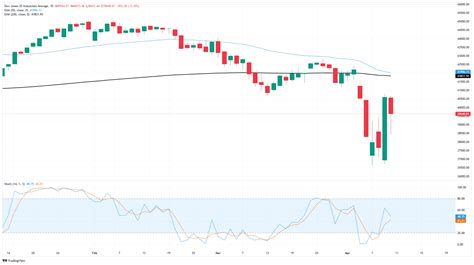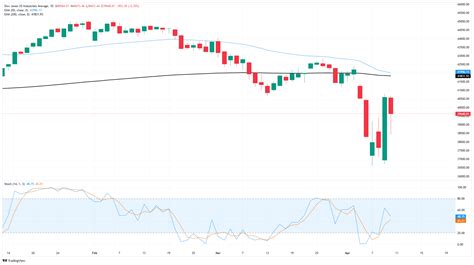
Understanding the Dow Jones Trends
The Dow Jones Industrial Average (DJIA) serves as a critical barometer for the overall performance of stock markets. By tracking 30 significant publicly traded companies, it provides insights into market trends and investor sentiment. Historical data indicates that fluctuations in the DJIA can often lead or signal broader economic movements. For instance, economic indicators such as GDP growth rates and unemployment figures can correlate strongly with changes in the DJIA.
Below is a table summarizing key indicators and their impact on Dow Jones trends:
| Indicator | Description | Impact on Dow Jones |
|---|---|---|
| GDP Growth Rate | Measures economic performance | Positive correlation |
| Unemployment Rate | Indicates labor market health | Inverse correlation |
| Consumer Confidence Index | Reflects consumer spending intentions | Positive correlation |
| Inflation Rates | Measures price level changes | Inverse correlation |
Understanding these indicators is essential for investors aiming to navigate the complexities of the stock markets. Moreover, insights from experts highlight that staying informed about these trends can significantly enhance investment strategies.
"Successful investing is about managing risk, not avoiding it."
To deepen your understanding of related economic theories and their impact on stock markets, consider exploring Lisa Cook’s work here. Additionally, for a broader perspective on global market dynamics, check out this link.
Key Indicators of Stock Markets
Understanding key indicators is essential for anyone looking to navigate the complexities of stock markets, particularly the Dow Jones. Among the primary indicators are the price-to-earnings (P/E) ratio, which helps investors assess a stock’s valuation relative to its earnings, and market capitalization, representing the total market value of a company’s outstanding shares. Additionally, dividend yield provides insights into a stock’s income-generating potential and is often considered by investors seeking stable returns. Monitoring these indicators allows for a more informed investment approach, aligning decisions with market trends and overall economic conditions. For further insights on market dynamics and expert analysis, platforms like MarketWatchand Nasdaqoffer valuable resources. By understanding these indicators, investors can better position themselves in the ever-evolving landscape of stock trading.
Expert Insights on Market Analysis
Understanding the intricate dynamics of the Dow Jones stock markets is crucial for investors seeking to develop informed strategies. Market analysts emphasize the importance of recognizing key indicators, such as the performance of constituent companies and economic reports, which significantly influence market movements. Expert opinions often highlight the necessity of monitoring trends in consumer behavior and corporate earnings, as these factors can serve as harbingers for market shifts. Additionally, insights into historical performance can provide context for current volatility and future expectations. Continuous assessment through reliable sources is vital; platforms like CNBCoffer up-to-date information and analytical perspectives that can guide investment decisions within this complex financial framework. Furthermore, reports from institutions such as the California Legislative Analyst’s Officecan illuminate broader economic conditions impacting stock performance, enhancing an investor’s ability to navigate potential risks associated with market fluctuations.
Investment Strategies for Dow Jones
Investing in the Dow Jones requires a deep understanding of market dynamics and strategic thinking. One effective approach is to diversify your portfolio by selecting stocks from various sectors represented in the index, which can mitigate risk during volatile market conditions. Additionally, analyzing historical performance data can be invaluable; reviewing past trends helps identify patterns that might indicate future movements. Monitoring economic indicators, such as interest rates and employment rates, is crucial as these factors significantly influence stock valuations. Investors may also consider employing options strategies, such as covered calls, to enhance returns while protecting against downside risk. For further insights into stock market behavior and historical context, resources like Yahoo Financeand detailed accounts of pivotal events such as the Stock Market Crash of 1929serve as excellent references.
Market Volatility: Navigating Risks
Market volatility is an inherent characteristic of the stock market, particularly evident within the Dow Jones index. Investors must recognize that fluctuations in stock prices can be influenced by a variety of factors, including economic data releases, geopolitical events, and changes in investor sentiment. Being aware of these dynamics is essential for effectively managing risks. Diversification across different sectors can help mitigate potential losses arising from sudden market downturns. Furthermore, employing strategies such as stop-loss orders allows investors to set predetermined exit points, thereby providing an additional layer of safety. For real-time updates and expert analyses on market movements, resources like NYSEand CNBCare invaluable tools that investors should leverage to stay informed and make timely decisions amidst the ever-changing landscape of stock markets.
Long-Term Growth with Dow Stocks
Investing in Dow stocks can be a significant avenue for long-term growth given their historical performance and stability. The Dow Jones Industrial Average comprises established companies that tend to exhibit resilience against market fluctuations, contributing to their appeal for investors seeking gradual wealth accumulation. An important factor in this growth is the consistent track record of dividends paid by many Dow-listed companies, which often provide a reliable return while holding these investments. Furthermore, incorporating diversification within a portfolio, by including shares from various sectors represented in the Dow, can mitigate risks associated with market volatility. As economic factors shift and evolve, those who strategically invest in these blue-chip stocks are likely to benefit from the compound growth generated over time. Thus, monitoring industry trends and adapting investment strategies accordingly can enhance the potential for successful long-term investments in Dow stocks.
Impact of Economic Factors on Stocks
Economic factors play a crucial role in influencing stock market trends, particularly within the context of the Dow Jones index. Key indicators such as interest rates, inflation, and employment figures can significantly sway investor sentiment and market performance. For instance, an increase in interest rates typically leads to higher borrowing costs, which may dampen corporate profits and reduce stock valuations. Conversely, lower inflation rates tend to foster a stable economic environment, encouraging investment and driving stock prices upward. Additionally, macroeconomic data releases can create volatility in the markets as investors reassess their strategies based on new information. Understanding how these economic indicators affect the Dow can empower investors to make informed decisions and effectively navigate potential market fluctuations. Furthermore, a comprehensive analysis of these factors not only aids in identifying trends but also enhances risk management strategies for a more successful investment approach.
Researching Dow Performance Metrics
Analyzing the performance metrics of the Dow Jones Industrial Average (DJIA) is crucial for investors seeking to understand market behaviors and trends. Key metrics such as price movements, volume trends, and historical data provide valuable insights into market sentiment and investor confidence. By examining daily fluctuations and long-term performance patterns, analysts can gauge the overall health of the index. Furthermore, comparing these metrics with broader economic indicators—like GDP growth, unemployment rates, and inflation—offers a more holistic view of how external factors influence stock market dynamics. Utilizing tools such as moving averages and relative strength indices aids in identifying potential entry and exit points for investments, thereby equipping investors with the necessary data to make informed decisions in a fluctuating market environment.

